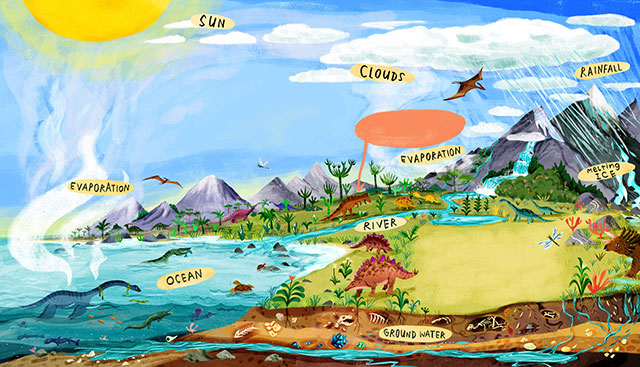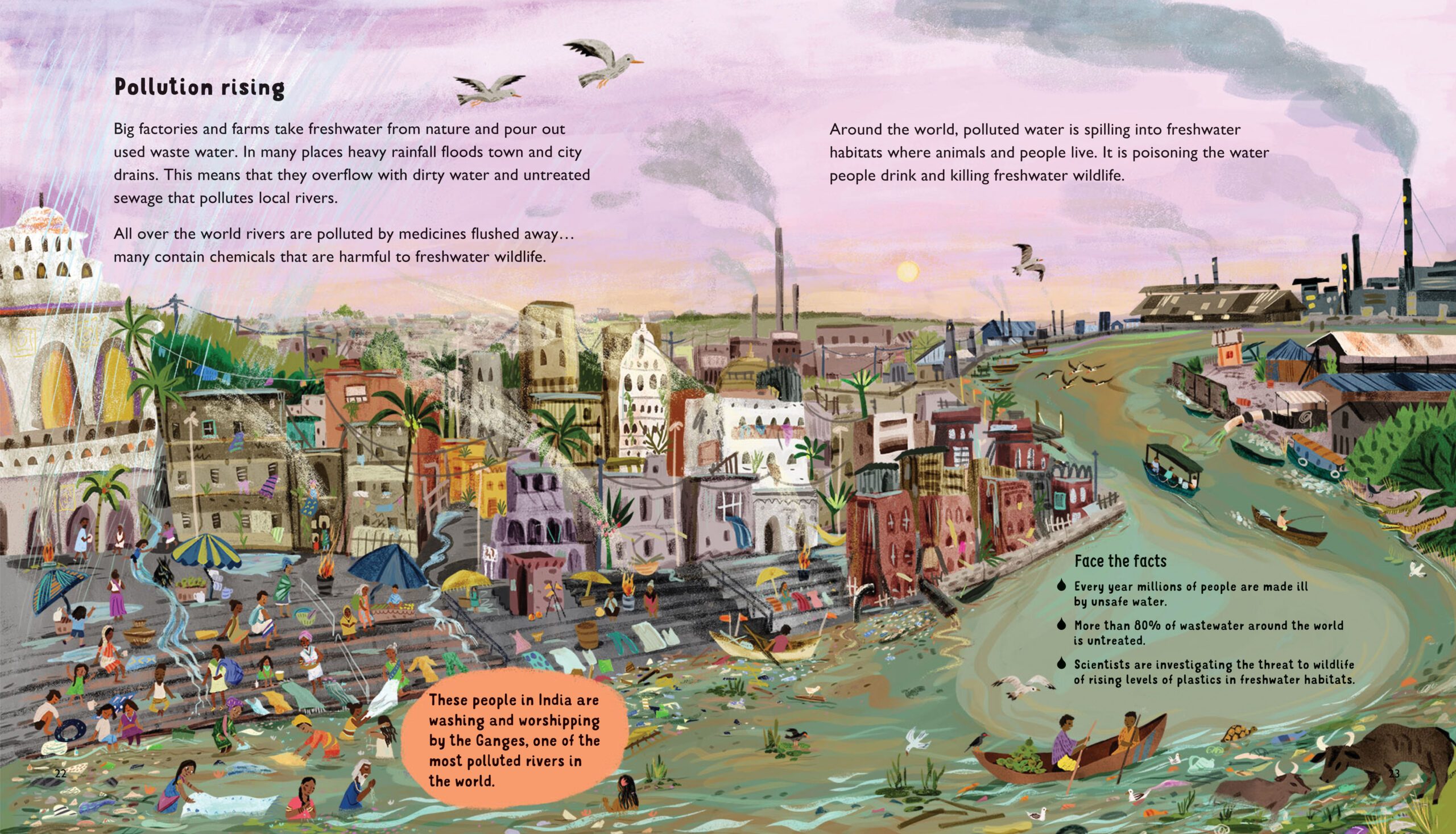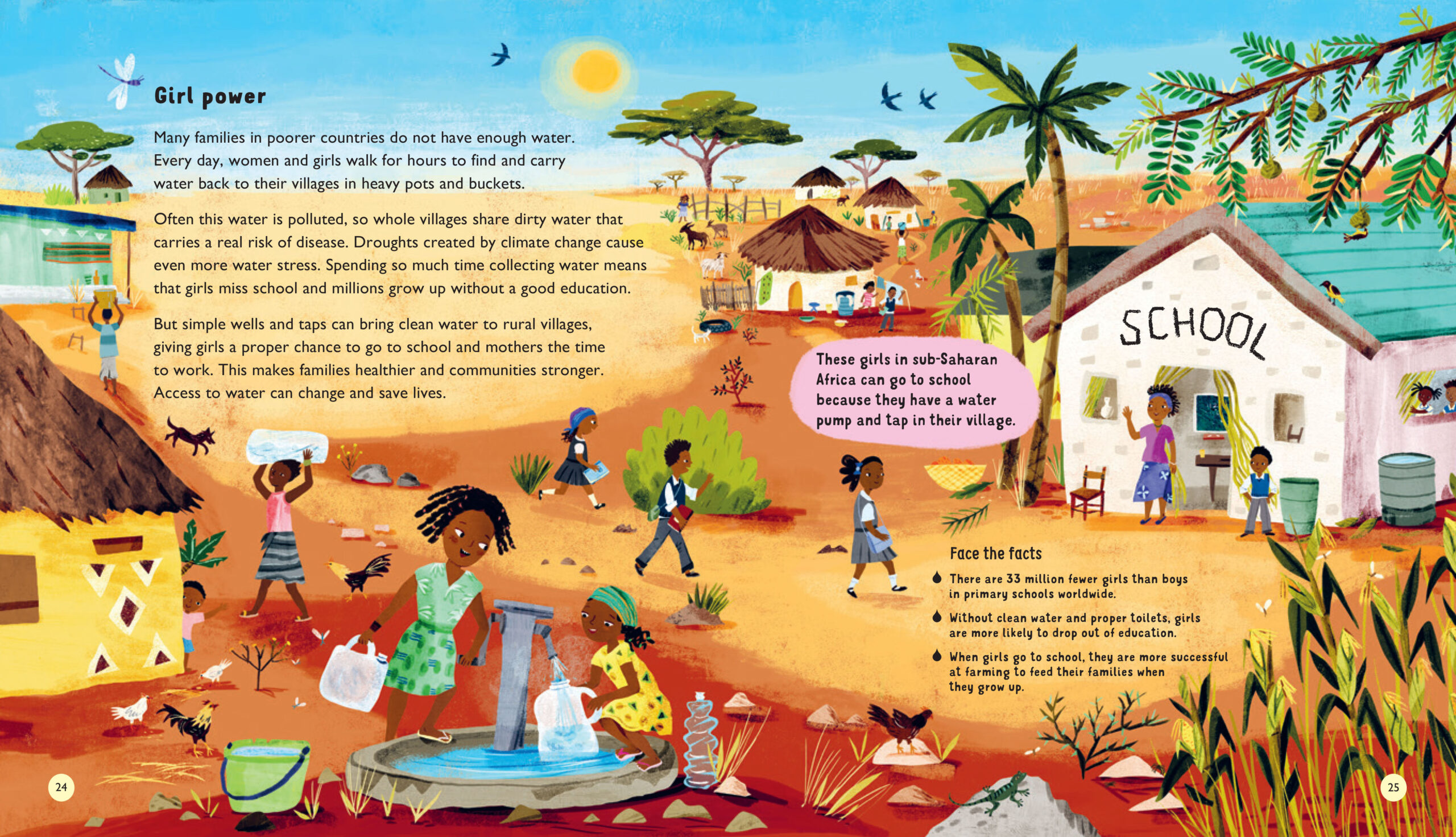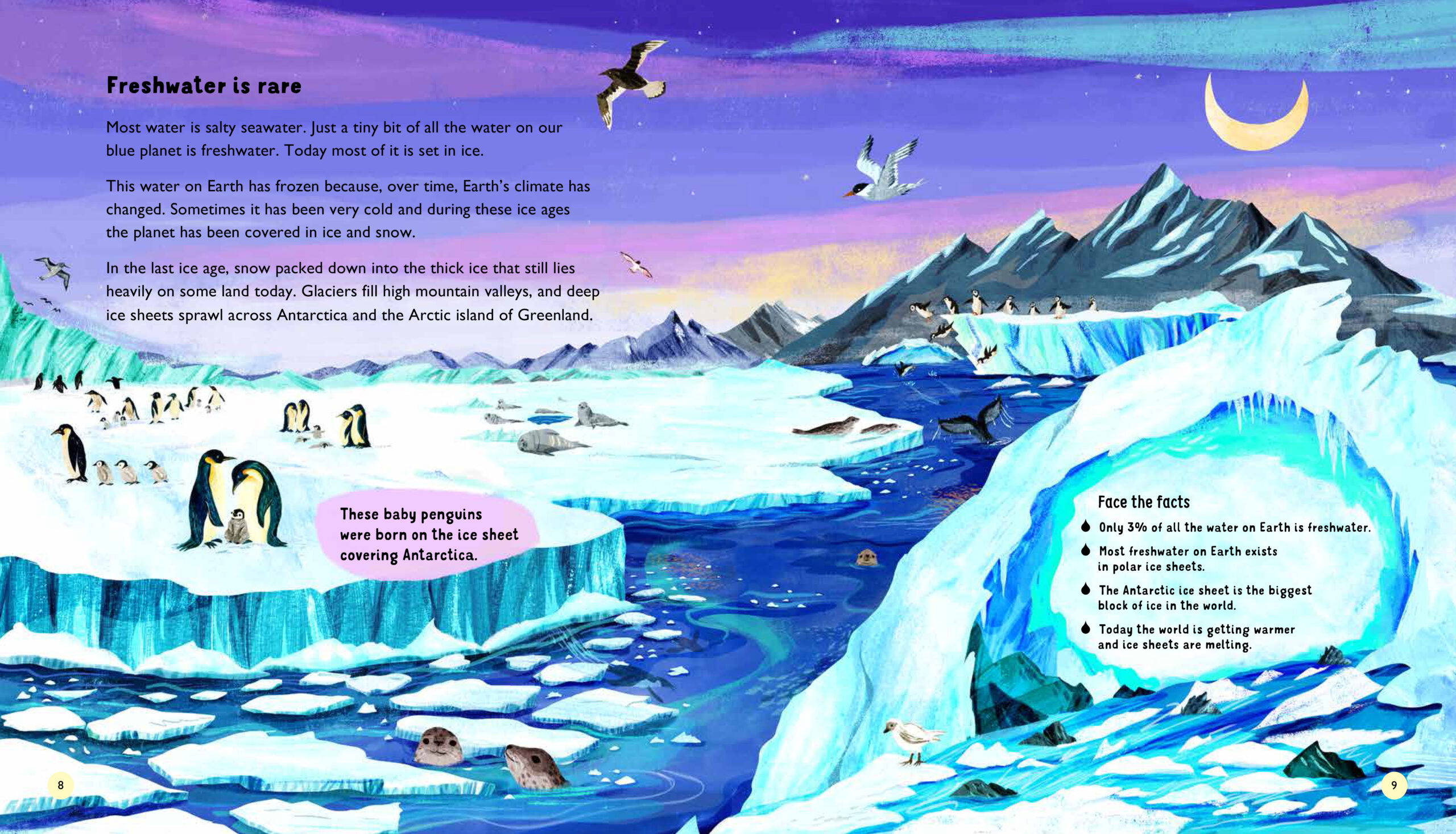WATER: Protect freshwater to save life on Earth
02.03.22
By subscribing to our newsletter, you give us permission to email you with news of our work and events, plus opportunities for volunteering, challenges to take part in and special offers in our shop. You can unsubscribe any time by clicking the link in our email footer.

02.03.22

Writing WATER: Protect freshwater to save life on Earth, I wanted to paint a big picture. Starting with the first raindrops on Earth and culminating with our responsibility to value and share this precious resource. It is the United Nation’s Water Action Decade (2018-2028) – a perfect opportunity to talk about why water is news. Christiane Engel’s vibrant illustrations and charming characters engage children in scenes from the first water on Earth to the water cycle, life in freshwater habitats, pollution, climate change and using water wisely in this global story.

As always in writing nonfiction for children, I learn so much about topics I explore and I love this journey. I developed the content of WATER in consultation with Peter Newborne, Senior Research Associate to ODI’s global affairs think tank, the Climate and Sustainability Programme. His enthusiasm for raising awareness of the topic sparked so many fascinating conversations. I also discovered details… from former CEO of Severn River Trust Mike Morris, I discovered the many different types of fish ladders help salmon leap up past hydroelectric dams to reach their spawning grounds. This research is one of the most fascinating aspects for me, of writing picture/ information books. My hope is always to ignite curiosity whether in classrooms, kitchens or bedtime reads; and flag opportunities for children to get involved in caring for the natural world.

In the primary curriculum there are many ways to explore the topic of water in topics from science to geography, music, art and PHSE. But critically, WATER focuses children’s attention on freshwater being unequally used and shared around the world. From the global picture to personal responsibility, book concludes with plenty of ideas for using less water everyday.
Tips for shrinking your water footprint
I am particularly delighted that Frank Water have endorsed our book and will benefit from copies sold. Under a PHSE topic, teachers might be interested to explore the personal stories from their projects in India and Nepal. They will inspire children with empathy and understanding of differences, and injustice of access to clean water around the world.

Also under the freshwater umbrella, there are simple science experiments for both the classroom and outdoors. The topic provides an excuse to don wellies and splash into puddles and ponds and investigate freshwater versus marine species. Spanning from local to global, children will be wide-eyed at the stories of species adapting to live in global wetlands from the watery lions Okavango Delta’s lions to caimans and jaguars of the world’s largest tropical wetland, the Panatal. Children can also discover the fascinating lives and stories of indigenous people living in the watery margins of these remote threatened habitats worldwide.
In talking about WATER in classrooms, I am looking forward to questions that send me back to my sources and freshwater experts working so hard to build a water-secure future for us all.
You need to load content from reCAPTCHA to submit the form. Please note that doing so will share data with third-party providers.
More InformationNotifications